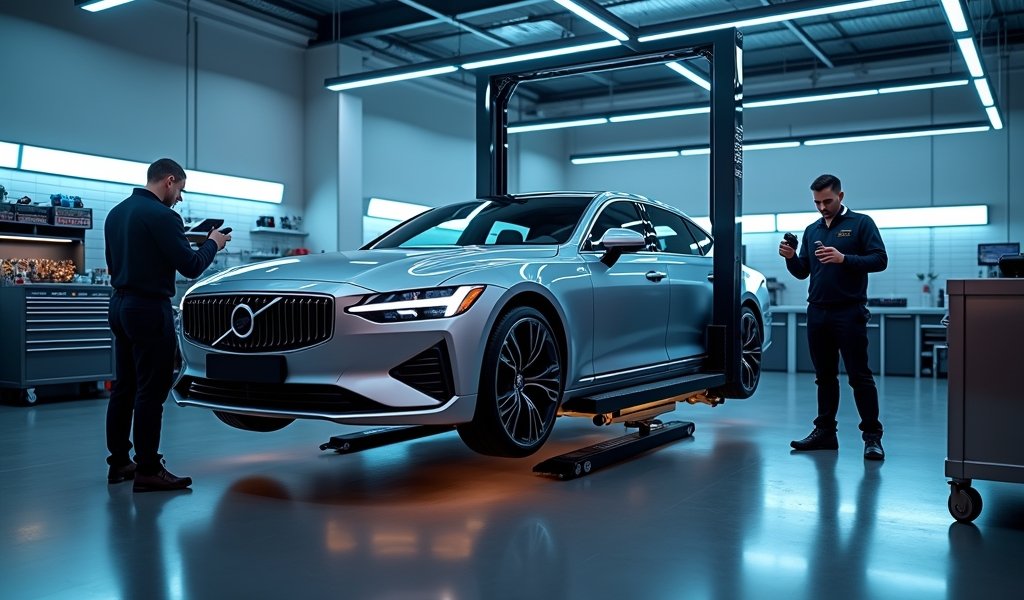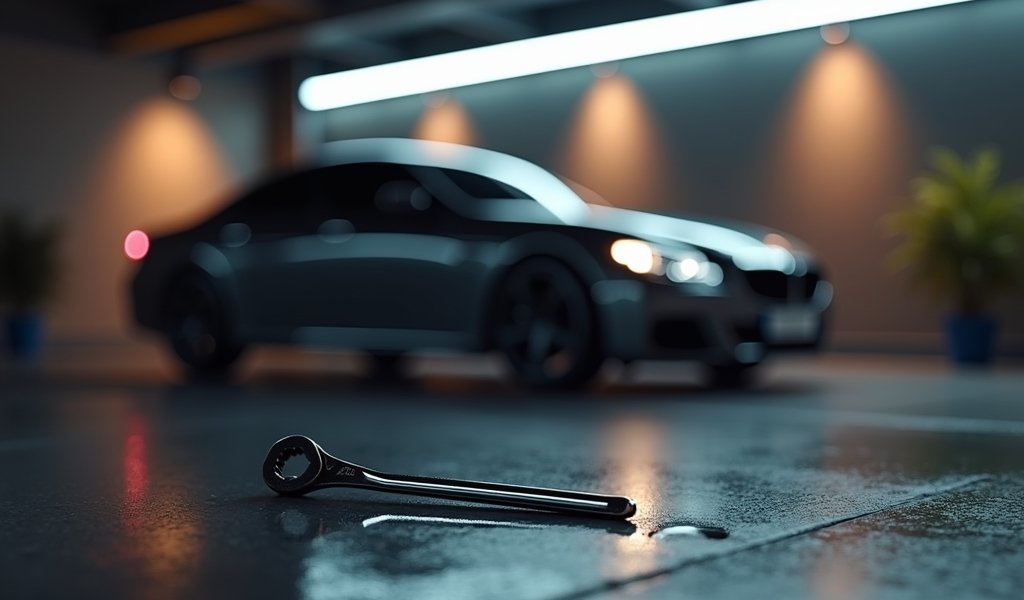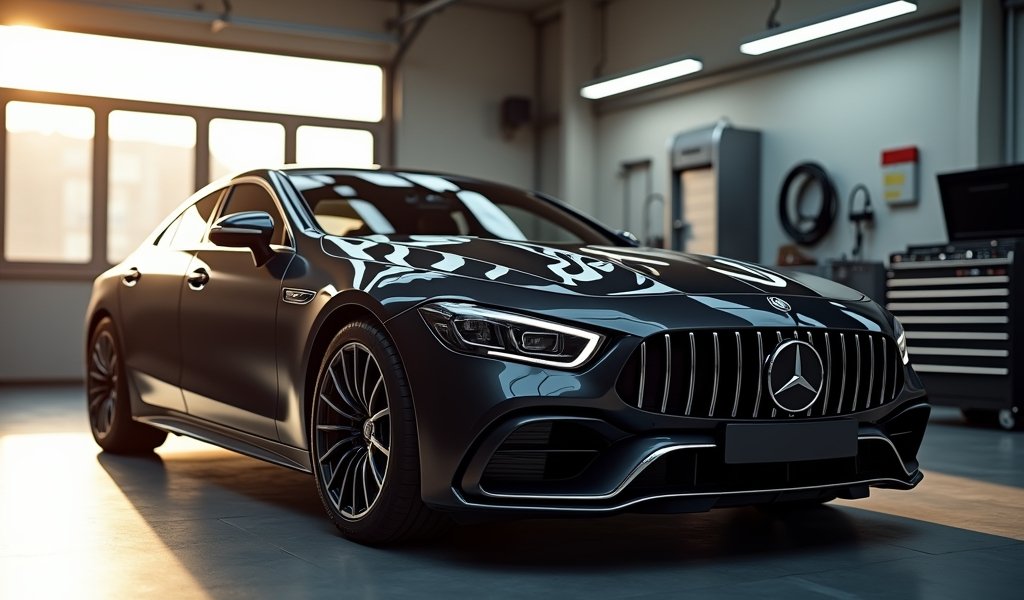Overview
This article outlines five essential maintenance strategies for luxury vehicles, emphasizing specialized care for high-end components including precise fluid management, professional-grade exterior protection, proper leather maintenance, performance system optimization, and preventative diagnostics. The author, drawing from decades of experience with premium automobiles, stresses that luxury vehicles require stricter adherence to maintenance schedules than standard cars to preserve both performance quality and investment value.
Table of Contents
- Understanding Luxury Vehicles: More Than Just a Pretty Face
- The Foundation: Regular Maintenance Schedules
- Exterior Care: Protecting Your Investment
- Interior Maintenance: Preserving Luxury From Within
- Performance Optimization: Keeping That Signature Ride
- Preventative Maintenance: The Secret to Longevity
- Conclusion
- Frequently Asked Questions
When it comes to luxury car maintenance tips, there’s a world of difference between keeping up a standard vehicle and preserving the excellence of a high-end automobile. As someone who’s spent over two decades with my hands deep in the engines of everything from Bentleys to Maseratis, I can tell you that these remarkable machines demand—and deserve—special attention. Today, I’m sharing my top five professional hacks that will keep your luxury vehicle performing at its peak while maintaining its stunning appearance and value.
Luxury vehicles aren’t just transportation; they’re investments that require thoughtful care. Whether you’re driving an elegant Mercedes-Benz, a powerful BMW, or a sophisticated Lexus, these practical maintenance strategies will help extend your vehicle’s life and enhance your driving experience. Let’s dive into what makes luxury car maintenance unique and how you can master it.
Understanding Luxury Vehicles: More Than Just a Pretty Face
Before we get into specific maintenance tips, it’s important to understand what sets luxury vehicles apart. High-end automobiles feature sophisticated engineering, premium materials, and advanced technology systems that require specialized knowledge and care. The components that make your ride so smooth, quiet, and powerful are precisely calibrated and often manufactured to tighter tolerances than those in standard vehicles.
Luxury cars typically include specialized features like adaptive suspension systems, complex climate control systems, and high-performance engines that utilize advanced materials and technologies. These sophisticated systems deliver that signature luxury experience—but they also mean that maintenance approaches need to be tailored specifically to these unique requirements.
The electronic systems in modern luxury vehicles have evolved significantly, with many models featuring over 100 electronic control units managing everything from engine performance to cabin ambiance. This complexity means diagnostic procedures must be more thorough, and repairs often require specialized equipment and expertise.
When considering luxury car maintenance, remember that preventative care is particularly valuable. The cost difference between regular maintenance and major repairs is far more dramatic in luxury vehicles, where specialized parts and labor come at a premium. According to J.D. Power’s Vehicle Dependability Study, regular maintenance can reduce long-term ownership costs by up to 40% for luxury vehicles—a compelling reason to stay on top of your maintenance schedule.
The Foundation: Regular Maintenance Schedules
The cornerstone of effective luxury car care is adhering to a proper maintenance schedule. Unlike standard vehicles, where you might stretch intervals occasionally, luxury cars demand strict adherence to manufacturer-specified service timelines. These aren’t arbitrary recommendations—they’re carefully calculated based on engineering requirements and performance optimization.

Oil Changes: Quality Matters
For luxury vehicles, oil changes aren’t just about frequency—they’re about using the exact specification of oil your vehicle requires. Many high-performance engines require synthetic oils with specific viscosity ratings and additive packages. Using anything less can impact performance and potentially void warranties.
I’ve seen clients struggle with mysterious performance issues that all traced back to using incorrect oil types. Your owner’s manual will specify exactly what oil your vehicle needs, but here’s a pro tip: document every oil change with the type used, date, and mileage. This creates a valuable service history that both helps you track maintenance and enhances resale value.
Fluid Checks and Replacements
Beyond engine oil, luxury vehicles rely on a variety of specialized fluids that need regular inspection and replacement:
- Transmission fluid (often requiring specific manufacturer-approved formulations)
- Brake fluid (typically requiring more frequent changes than standard vehicles)
- Power steering fluid (which may be a specialized type for your specific model)
- Coolant/antifreeze (often a proprietary formula for luxury brands)
- Differential and transfer case fluids (especially important for performance models)
Each of these fluids plays a critical role in your vehicle’s performance and longevity. For example, many luxury brands use specialized brake fluids with higher boiling points to handle the performance capabilities of their braking systems. Using incorrect fluids can lead to premature component wear or even system failure.
Working with a qualified specialist who understands your specific make and model is essential for these services. Many best car maintenance practices for luxury vehicles involve specialized equipment and diagnostic tools that aren’t available at general repair shops.
Exterior Care: Protecting Your Investment
The exterior of your luxury vehicle isn’t just about aesthetics—it’s about protecting a significant investment. Premium vehicles often feature specialized paint processes, exotic materials, and design elements that require specific care approaches.
Paint Protection Strategies
One of the most effective investments you can make is in proper paint protection. Modern ceramic coatings provide remarkable protection against environmental contaminants, UV damage, and light scratches. Unlike traditional waxes that might last 2-3 months, high-quality ceramic coatings can provide protection for 2-5 years with proper maintenance.
For clients seeking the ultimate protection, paint protection film (PPF) offers physical barrier protection against rock chips, bug splatter, and minor abrasions. These clear urethane films are virtually invisible when professionally installed and can be applied to high-impact areas or the entire vehicle for comprehensive protection.
When washing your luxury vehicle, always use proper techniques:
- Utilize the two-bucket method (one with soap solution, one with clean rinse water)
- Use microfiber wash mitts and drying towels specifically designed for automotive use
- Invest in pH-balanced car wash soaps formulated for premium finishes
- Consider using filtered water for final rinses to prevent water spots
These washing techniques prevent introducing swirls and microscopic scratches that can dull your vehicle’s finish over time. I’ve seen numerous cases where improper washing did more damage than environmental factors ever could.
Wheel and Brake Care
Luxury vehicles often feature specialized wheel finishes and high-performance brake systems that require specific care. Many feature multi-piston calipers and performance brake pads that produce more brake dust than standard systems.
Use pH-balanced wheel cleaners specifically formulated for your wheel type (aluminum, painted, chrome, etc.) and avoid harsh chemicals that can damage protective finishes. For brake dust management, consider applying a wheel sealant that makes regular cleaning easier and protects the finish.
For those living in regions with winter road salt or coastal areas with salt air, more frequent undercarriage washing becomes essential. These corrosive environments can accelerate deterioration of components if not properly maintained.
Interior Maintenance: Preserving Luxury From Within
The interior of a luxury vehicle often features materials rarely found in standard cars—from supple leather and real wood to alcantara and carbon fiber. These premium materials require specific care approaches to maintain their beauty and functionality.
Leather Care Essentials
The leather in luxury vehicles isn’t just any leather—it’s often semi-aniline or full-aniline, which means it has fewer protective coatings than heavily processed leathers. This provides that buttery-soft feel but also means it’s more susceptible to damage from improper care.
Establish a regular leather maintenance routine:
- Clean with pH-balanced leather cleaners every 1-3 months
- Apply appropriate leather conditioners to prevent drying and cracking
- Address spills immediately to prevent staining or damage
- Use leather protection products to guard against UV damage and wear
I recommend testing any new product in an inconspicuous area first—I’ve seen beautiful interiors damaged by using the wrong care products. For vehicles with perforated leather (common for ventilated seats), use minimal product and never saturate the surface to avoid clogging the perforations.
Climate Control and Electronics
The sophisticated climate control and electronics systems in luxury vehicles benefit from regular maintenance as well. Have the climate system serviced every 2-3 years, including replacing cabin air filters with high-quality alternatives that can improve air quality and system performance.
For touchscreens and control surfaces, use dedicated electronics cleaners that won’t leave residue or damage anti-glare coatings. Microfiber cloths designed for electronics are worth the investment to prevent scratching these sensitive surfaces.
Don’t overlook the importance of proper interior detailing techniques for these sophisticated systems. Dust and debris can affect button function and appearance over time, especially in climate-controlled buttons and switches that are used frequently.
Performance Optimization: Keeping That Signature Ride
The performance characteristics that define luxury vehicles—whether it’s the whisper-quiet ride of a Rolls-Royce or the precise handling of a Porsche—require specific maintenance approaches to preserve.
Suspension and Alignment
Many luxury vehicles feature advanced suspension systems including air suspension, adaptive dampers, or active anti-roll systems. These components require specialized care and monitoring. Have alignment checked more frequently than with standard vehicles—every 10,000 miles or at the first sign of uneven tire wear.
For vehicles with air suspension, listen for compressor noise that might indicate excessive cycling, which could signal a leak in the system. Address these issues promptly to prevent compressor failure, which is significantly more expensive than fixing a minor leak early.
Tire maintenance takes on even greater importance with performance-oriented luxury vehicles. Many feature staggered tire setups (different sizes front and rear) or specialized compounds that wear differently than standard tires. Regular rotation patterns may differ from conventional vehicles, so follow manufacturer guidelines precisely.
Engine Performance Maintenance
Luxury vehicle engines often operate under tighter tolerances and may utilize forced induction through turbochargers or superchargers. These systems benefit from additional attention:
- Use only manufacturer-approved fuel with the recommended octane rating
- Replace air filters on schedule or more frequently in dusty environments
- Consider fuel system cleaning services every 15,000-30,000 miles
- Monitor for changes in performance, which can indicate developing issues
For turbocharged engines, proper warm-up and cool-down procedures help extend turbocharger life. Allow the engine to idle briefly before shutdown after spirited driving to allow oil to continue circulating through the hot turbocharger bearings—a practice that research from the Society of Automotive Engineers has shown can significantly extend turbocharger lifespan.

Preventative Maintenance: The Secret to Longevity
The most sophisticated luxury car maintenance approach involves getting ahead of problems before they develop. This preventative mindset separates casual ownership from truly preserving your vehicle’s condition and value.
Diagnostic Scanning and Monitoring
Consider regular diagnostic scans even when no warning lights are present. Many systems store “soft codes” that indicate developing issues before they become serious enough to trigger warning lights. Professional-grade scanning tools can access manufacturer-specific data that generic code readers cannot.
Some luxury brands now offer connected car services that provide remote diagnostic monitoring. If available for your vehicle, these services are worth the subscription cost for early detection of potential issues.
Storage and Long-Term Care
For vehicles that aren’t driven daily, proper storage procedures preserve condition and prevent deterioration:
- Maintain battery charge with a quality maintainer designed for modern vehicles
- Consider fuel stabilizers for storage periods exceeding 30 days
- Use tire cradles for extended storage to prevent flat-spotting
- Store in climate-controlled environments when possible to prevent moisture-related issues
For seasonal storage, a comprehensive preparation process should include fluid checks, tire inflation adjustment, and properly securing the vehicle against pests and environmental factors.
Develop a relationship with a specialist familiar with your specific make and model. The value of working with someone who truly understands the nuances of your vehicle cannot be overstated. These relationships allow for continuity of care and the development of a maintenance history that enhances both performance and resale value.
Conclusion
Luxury car maintenance isn’t just about preserving a vehicle—it’s about protecting an experience. The pleasure of driving a perfectly maintained luxury automobile creates moments of joy that standard vehicles simply can’t match. By following these professional maintenance tips and developing a proactive approach to care, you’ll not only extend your vehicle’s life but enhance your ownership experience.
Remember that consistency is key. Regular, methodical care following manufacturer specifications will always yield better results than sporadic intensive maintenance. Document everything, work with qualified professionals who understand your specific vehicle, and address small issues before they become major problems.
Your luxury vehicle represents both a significant investment and a source of daily pleasure. With these maintenance approaches, you can ensure it continues to deliver the exceptional experience it was designed to provide for many years to come. After all, a well-maintained luxury car doesn’t just run better—it tells a story about its owner’s attention to detail and appreciation for excellence.
Frequently Asked Questions
How often should I have my luxury car serviced?
Follow your manufacturer’s recommended service intervals precisely, typically every 5,000-10,000 miles depending on the brand. Never exceed these intervals as luxury vehicles have tighter engineering tolerances that require consistent maintenance.
Is it worth paying extra for premium fuel for my luxury car?
Yes, always use the fuel octane rating specified by your manufacturer. Using lower-grade fuel can reduce performance, damage sensitive components, and potentially void warranties in some high-performance luxury vehicles.
Can I take my luxury vehicle to any mechanic?
It’s strongly recommended to use specialists familiar with your specific brand. Independent specialists with brand certification or dealership service departments have the specialized training and equipment necessary for proper diagnosis and repair.
How can I maintain my luxury car’s leather interior?
Clean with pH-balanced leather cleaners every 1-3 months and apply appropriate conditioners to prevent drying. Protect leather from direct sunlight when possible and address spills immediately to prevent staining.
What’s the most important maintenance item that luxury car owners often overlook?
Regular fluid inspections and replacements beyond just oil changes are frequently neglected. Specialized transmission fluids, differential oils, and cooling system fluids are critical to your luxury vehicle’s performance and longevity.

